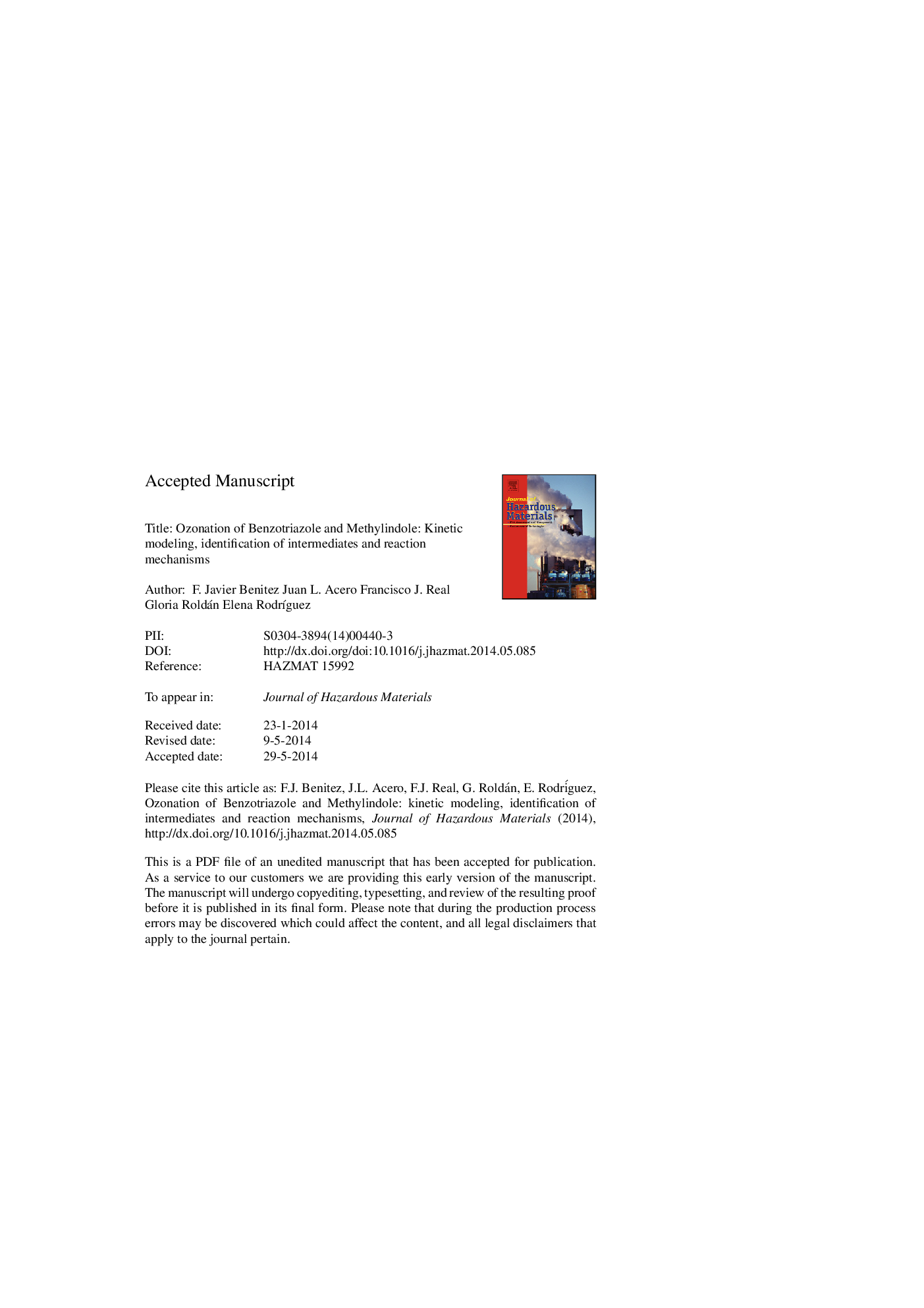| Article ID | Journal | Published Year | Pages | File Type |
|---|---|---|---|---|
| 576499 | Journal of Hazardous Materials | 2015 | 29 Pages |
Abstract
The ozonation of 1H-benzotriazole (BZ) and 3-methylindole (ML), two emerging contaminants that are frequently present in aquatic environments, was investigated. The experiments were performed with the contaminants (1 μM) dissolved in ultrapure water. The kinetic study led to the determination of the apparent rate constants for the ozonation reactions. In the case of 1H-benzotriazole, these rate constants varied from 20.1 ± 0.4 Mâ1 sâ1 at pH = 3 to 2143 ± 23 Mâ1 sâ1 at pH = 10. Due to its acidic nature (pKa = 8.2), the degree of dissociation of this pollutant was determined at every pH of work, and the specific rate constants of the un-dissociated and dissociated species were evaluated, being the values of these rate constants 20.1 ± 2.0 and 2.0 ± 0.3 Ã 103 Mâ1 sâ1, respectively. On the contrary, 3-methylindole does not present acidic nature, and therefore, it can be proposed an average value for its rate constant of 4.90 ± 0.7 Ã 105 Mâ1 sâ1 in the whole pH range 3-10. Further experiments were performed to identify the main degradation byproducts (10 mg Lâ1 of contaminants, 0.023 g hâ1 of ozone). Up to 8 intermediates formed in the ozonation of 3-methylindole were identified by LC-TOFMS, while 6 intermediates were identified in the ozonation of 1H-benzotriazole. By considering these intermediate compounds, the reaction mechanisms were proposed and discussed. Finally, evaluated rate constants allowed to predict and modeling the oxidation of these micropollutants in general aquatic systems.
Related Topics
Physical Sciences and Engineering
Chemical Engineering
Chemical Health and Safety
Authors
F. Javier Benitez, Juan L. Acero, Francisco J. Real, Gloria Roldán, Elena RodrÃguez,
